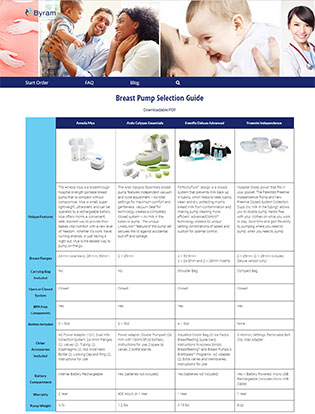What to Know About Episiotomy and Perineal Tears
In the past, episiotomies were routine and thought to help reduce the risk of more serious complications, but these views are shifting. Today, many experts question the necessity and effectiveness of these once-routine procedures. For more information, and what to expect during delivery, here's some key information about episiotomy procedures and perineal tears.
What is an Episiotomy?
An episiotomy is a surgical procedure that's made during vaginal delivery to help make room for your baby's head without causing a natural tear. It's done by creating either a midline incision or a mediolateral incision on the area called the perineum, which is the space between your vagina and anus. The type of episiotomy may vary based on your situation and your doctor's assessment.
A midline incision is when a vertical cut is made from the vaginal opening straight toward the anus. However, there is a higher risk that the cut or tear can extend into the anal area, which makes recovery more difficult.
A mediolateral incision is made at an angle. It's considered more painful and harder to repair but can decrease the risk of an extended tear.
Why an Episiotomy May Be Needed
The surgical incision is made to help prevent perineal tears during vaginal birth, as experts once believed that incisions would heal faster and with fewer complications than natural tears. It was also thought that, without an episiotomy, natural tears could damage muscles and connective tissues more severely. This, in turn, was thought to reduce the damage to the pelvic floor and decrease the risk of post-delivery complications such as urinary incontinence.
Due to these views, episiotomies used to be a routine procedure during childbirth, but many experts are now questioning whether it's beneficial for supporting labor and delivery. However, there are still some instances where an episiotomy may be recommended.
The New Recommendations Against Routine Episiotomy Procedures
Today, research suggests that while an episiotomy makes the opening of the vaginal canal bigger, it could also result in larger, potentially avoidable tears. It was also found that the procedure may not actually prevent the complications like it was once believed. Still, experts agree that it may be necessary in certain circumstances to ensure the safety of both you and your baby.
Who Should Get an Episiotomy?
According to the American College of Obstetricians and Gynecologists (ACOG), an episiotomy should only be done when it's absolutely necessary. Therefore, your birth plan should include talking with your doctor or midwife about their views on episiotomies. Some medical centers still regularly practice this procedure, while others adopt the current views. Ideally, you'll want to find someone who agrees with your views yet still knows how to make the episiotomy incision in case of emergency.
Today, the chances of needing an episiotomy are quite low, as they're only recommended if your baby is stressed and needs to be delivered as soon as possible. Alternatively, it may be done to make your vaginal opening larger for childbirth if you're at risk for serious perineal skin and muscle damage.
Some reasons your doctor may suggest making a surgical incision rather than letting the tissue tear include:
- Your baby has an unusual heart rate during delivery
- Your baby is in fetal distress and doesn't have enough oxygen
- Your baby's shoulders are stuck or trapped behind the pelvic bone
- Your baby is in a breech position
- Forceps are needed to aid in the delivery
- Vacuum delivery is required
- Your baby is too large for the opening of the vagina
- Your baby is born preterm, and it's a complicated birth
- You are dehydrated or overly exhausted from prolonged labor
- You can no longer control pushing due to extended labor
Each of these situations will be evaluated for your specific circumstances to determine whether an episiotomy or tear is better during childbirth.
Risks of Episiotomy Incisions
Certain complications can occur during the procedure. Some of the most notable risks include:
- Bleeding
- Infection
- Injury to the anal sphincter
- Injury to the rectum
- Scarring
- Pain during sex
- Urinary incontinence
- Longer post-delivery recovery
Can You Prevent Perineal Tears?
Unfortunately, whether your perineal area may tear or not is largely out of your control. While some OBGYNs suggest "stretching" the area, others don't know if this process actually works. If you'd like to try, you'll want to perform a perineal massage daily in the weeks leading up to your delivery. This may help stretch the skin or muscle in the area, preparing you for vaginal birth.
Alternatively, during the second stage of labor, you can apply a warm compress to the perineum. This can give the area some elasticity and may help reduce the risk of a tear.
What to Expect if You Need an Episiotomy
While the procedure itself can sound scary, you likely won't feel either the initial incision or the stitches to repair it. If you've already had an epidural, this will help minimize pain. Otherwise, your doctor will administer a local anesthetic to the perineal skin to numb the area. The procedure and type will also depend on how deep and large the incision needs to be. There are four different degrees, which are also used to describe tears. Each of them depends on the damage to the perineal tissue and muscles in the surrounding area.
- First-degree: This is the least severe type, involving a small incision through the vaginal lining.
- Second-degree: This type extends further, involving both the vaginal lining and underlying tissue.
- Third-degree: This is deeper, extending through the vaginal lining, tissue, and the anal sphincter.
- Fourth-degree: This is the most extensive type, involving all the structures in a third-degree episiotomy plus the anal epithelium, which can lead to a connection between the vaginal and anal openings, known as an obstetric anal sphincter injury (OASIS).
Episiotomy Recovery
Unfortunately, the recovery from an episiotomy can be fairly uncomfortable. The following are a few things to expect and how to manage them during your recovery.
Pain at the Incision Site
During the healing process, you may have pain that ranges from mild to severe, depending on the procedure and the type of episiotomy you receive. Your doctor will likely recommend you take a pain reliever such as ibuprofen or paracetamol, but aspirin should be avoided if you're breastfeeding. If you have severe pain, your doctor may recommend a prescription painkiller, but this will affect your ability to safely nurse your child. So, it's important to understand your options and discuss them with your doctor.
Applying an ice pack may help reduce swelling and pain, but avoid direct contact with your skin. Place the ice pack in a towel before putting it on the area a few times a day or as needed.
Risk of Infection
Always keep the incision clean and dry during the healing process. Although this can be difficult due to the location of the injury, it can help reduce the risk of infection. A few times a day, take off your underwear and lay down for about 10 minutes to help give your stitches air and dry out. If you notice any signs of infection, such as redness, swelling, unusual odors, pus, discharge, or excess heat, contact your doctor as soon as possible.
Using the Bathroom
To help ease soreness and speed healing, it's important to follow your doctor's instructions for using the bathroom. Without the proper measures to keep the area clean, you increase the risk of infection. One of the best ways to sanitize after using the bathroom is to pour warm water over the area to rinse it. You may also want to try placing a clean pad against the incision while passing solid waste to help alleviate pressure on the stitches. Always wipe gently from front to back. If you're having trouble with bowel movements, talk to your doctor about your options with a laxative.
Episiotomy Recovery and Exercise
Postpartum exercise is a great way to help your recovery and rebuild your pelvic floor muscles. Start slow and focus on doing Kegels and other pelvic floor exercises. When you're ready, incorporate other exercises to help your body regain strength.
Episiotomy Recovery and Sex
Sex after childbirth can be a little scary at first, especially if you've undergone an episiotomy. There are no "rules" about when you can have sex again, but it's important to give your body enough time to fully heal. Try not to rush into it, and if you experience pain during sex, don't feel obligated to keep going. You may also want to use a lubricant to help reduce any discomfort caused by dryness. If the pain persists, talk to your doctor.
To help you prepare for your baby's arrival and make recovery a little easier, don’t forget to get your free breast pump through insurance from Byram Healthcare. Contact one of our specialists today to learn more or get started with your order.





